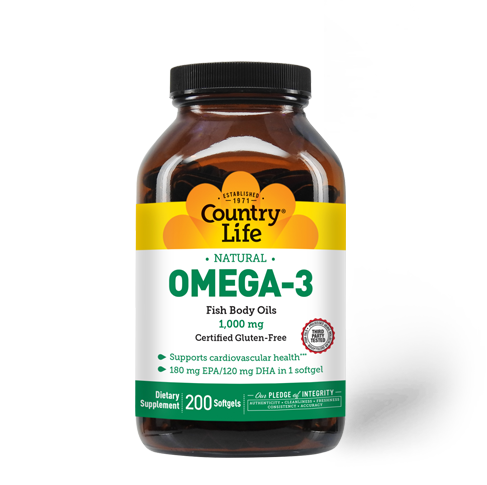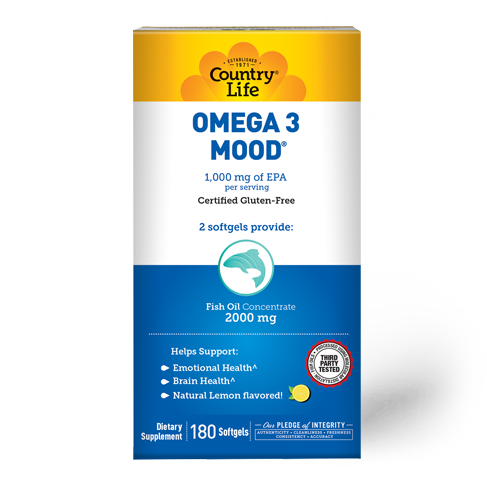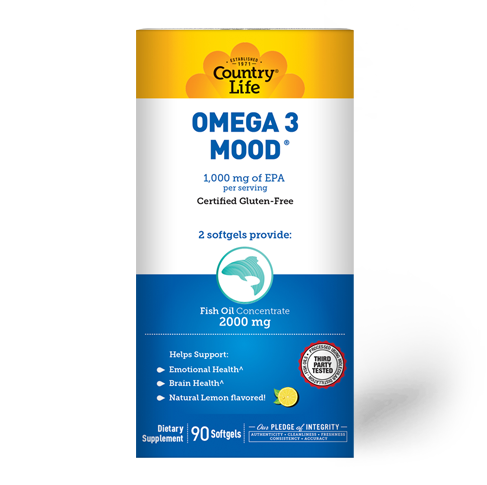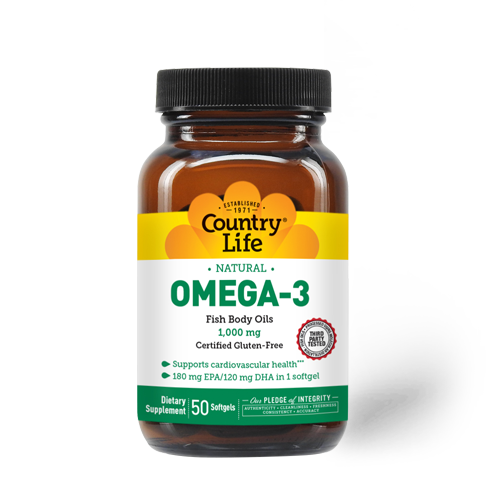
You’ve probably heard the term “Good Fats” but do you know what that means? Or do you know why we need “Good Fats” in our diet? Let’s examine the Omega 3 and Fatty Acid categories of supplements.
First, what ARE fatty acids? The Cleveland Clinic explains fatty acids as follows:
“..two main types of fatty acids are saturated fat and unsaturated fat. Unsaturated fat further breaks down into polyunsaturated fat and monounsaturated fat.”
Most of us are familiar with these 2 main types of fatty acids – saturated fats and unsaturated fats. But do you know the difference between them? What makes them different? Unsaturated fats tend to be liquid at room temperature while saturated fats are usually not. Then there is something called “trans fats” or “hydrogenated fat”. These are also known as manufactured fats. They are manufactured by a process in which the fats are combined with hydrogen. This turns a room temperature liquid fat into a room temperature solid fat. Manufacturers use this type of fat in processed foods so that the food will stay fresher longer on the shelf. FDA now considers trans fats to be unhealthy and is requiring manufacturers to label the amount of trans fats in products be noted on the Nutrition Facts label on packaged foods. Saturated fats, along with trans fats, are considered to be the “unhealthy” fats we can get in our diet from things like processed foods, margarine, red meat, bacon, pastries, etc.
“Healthy” fats are the unsaturated fats found in things like avocado, olive oil, nuts, seeds, fish like salmon, sardines, and mackerel. Additionally, unsaturated fats are broken down a bit further into monounsaturated and polyunsaturated forms as well as Omega 3’s. Who knew fats could be so complicated? But understanding some simple basics will make it easier to choose the RIGHT fats to put in your body for the most benefit.
Probably the most talked about in the “fat” category are Omega 3 fats. Omega 3 fatty acids are essential (we must consume them) nutrients vital for all the cells in our body. They are part of every cell membrane and provide structure and support for the cell. Omega 3 fats are categorized by:
- ALA – alpha-linolenic acid – mainly found in plant oils like flax or soybean
- EPA – eicosatetraenoic acid – found in fish and seafood
- DHA – docosahexaenoic acid – found in fish and seafood
DHA has been associated with supporting brain and eye health while EPA has been linked to supporting cardiovascular health. In the body ALA can convert to EPA and DHA but only in small amounts so to increase these levels is most efficiently done either through a diet incorporating fish, especially cold water fatty fish like salmon, tuna, herring and sardines) and other seafood or supplementation.
Although scientists are still studying Omega 3’s in an attempt to understand exactly how they affect health, the National Institutes of Health reports some research has shown that Omega 3’s may provide health benefits in the following areas:
- Cardiovascular health
- Infant nutrition
- Eye health
- Joint support
- Cognitive functioning
Remember, it is important to consult with your Health Care Provider before adding or changing your supplement routine.
Omega 3’s may interact with your prescription medications. We know that Omega 3’s are vital for the integrity of every cell in the body, discussing your individual needs with your Health Care Provider is always recommended.
What about those Omega 6’s and 9’s?
Omega 6 fatty acids, like Omega 3’s, are also an essential nutrient (we must consume them). Harvard Health Publishing reported “……….two years in the making, nine independent researchers from around the country, including three from Harvard, say that data from dozens of studies support the cardiovascular benefits of eating omega-6 fats (Circulation, Feb. 17, 2009). "Omega-6 fats are not only safe but they are also beneficial for the heart and circulation," says advisory coauthor Dr. Dariush Mozaffarian, an assistant professor of medicine at Harvard-affiliated Brigham and Women's Hospital.”
Omega 6 fatty acids are found in sunflower, safflower, corn and soybean oils as well as in walnuts, sunflower seeds and pumpkin seeds. As a rule of thumb, many of us get enough Omega 6 in our diets already. The ratio of 4:1 (Omega 6 to Omega 3) is considered a health ratio. So if you consume 6 grams of Omega 6 you should be consuming 1.5 grams of Omega 3. However, according to the National Institutes of Health the average Western diet is about 15:1! NIH notes that Western diets are deficient in Omega 3 fatty acids.
Country Life® offers two exceptional products that can support your daily intake of Omega 3 fatty acids – Omega 3 Mood and Omega 3 Fish Oil.
Both products provide Omega 3 from fish. The Omega 3 Mood provides 2000 mg of fish oil with higher concentrations of EPA (1000 mg) and 150 mg of DHA. The basic Omega 3 Fish Oil product provides 1000 mg of fish oil with 180 mg of EPA and 120 mg of DHA. Either product will offer you a great way to add high quality Omega 3 fatty acids to your body so you can #PowerYourGreatness!
















Share:
The Special Needs of Mature Hair
What Supplements Can Help Support Stress Management